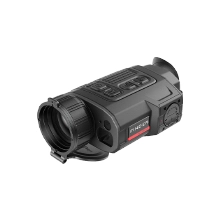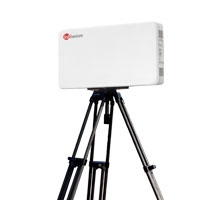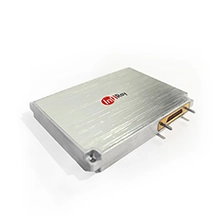How Thermal Cameras Help Factories Improve Product Quality and Efficiency

\
The modern manufacturing industry places a high emphasis on maintaining superior product quality and optimizing efficiency. However, conventional quality control methods can be time-consuming and susceptible to human error. Fortunately, thermal cameras have emerged as a game-changing technology that factories are increasingly adopting to transform their operations. This article delves into the benefits of thermal cameras and their various applications in factory settings, showcasing how they enhance efficiency and improve product quality. Expanded Reading: Everything You Need to Know about Thermal Cameras.
What are the Application Advantages of Thermal Cameras?
1. Non-Contact Temperature Measurement
One of the key advantages of thermal cameras is their ability to measure temperatures without physical contact. This feature is especially valuable in industrial settings, where monitoring temperatures in real-time is crucial for ensuring the quality of products and the functioning of equipment. By eliminating the need for physical contact, thermal cameras minimize the risk of contamination, reduce downtime, and enhance workplace safety.

The InfiRay online thermal imaging camera detects the temperature data of each part of the workpiece and generates an alarm signal when the workpiece heats up to a preset value to prevent damage from overheating.
2. Early Detection of Anomalies
Thermal cameras can identify temperature variations, highlighting abnormalities that might go unnoticed with traditional inspection methods. By capturing detailed thermal images, these cameras enable operators to detect potential issues such as overheating components, electrical faults, or leaks. Early detection allows for timely intervention, preventing costly breakdowns, minimizing waste, and maximizing overall productivity.
3. Enhancing Quality Control
Product quality is paramount in manufacturing. Thermal cameras play a vital role in quality control by detecting defects that are not visible to the naked eye. By identifying temperature variations, these cameras can pinpoint inconsistencies in product composition, material distribution, or structural integrity. By implementing thermal imaging in quality control processes, factories can ensure that only products meeting the highest standards are released to the market, enhancing customer satisfaction and brand reputation. Check What Kind of Thermal Cameras Can Help in Improving Product Quality and Efficiency.

Combined with the customer's needs and the actual situation on site, InfiRay chose online thermal camera to carry out the inspection and develop an exclusive plan to meet the needs of the customer.
Applications of Thermal Cameras in Factories:
1. Equipment Maintenance and Monitoring
Thermal cameras are extensively used to monitor machinery and equipment in factories. By regularly scanning equipment for abnormal temperature patterns, operators can identify potential malfunctions, lubrication issues, or overloaded components. This proactive approach to maintenance helps prevent costly breakdowns, reduces downtime, and extends the lifespan of critical machinery.
2. Energy Efficiency and Sustainability:
Assessing energy consumption in factories can be made easier with the use of thermal cameras. These cameras can detect areas with excessive heat loss or inefficient thermal insulation, allowing manufacturers to make targeted improvements that reduce energy consumption and promote eco-friendliness. By optimizing production systems through thermal imaging, significant cost savings can be achieved while also promoting a greener manufacturing process.

InfiRay AT31F/61F Fixed Focus Online Thermal Imaging Camera with professional temperature analysis software provides three alarm methods: pop-up window prompts, ringing, and alarm capture.
3. Process Optimization
Thermal cameras are used to monitor manufacturing processes, ensuring that temperature-sensitive operations are carried out within specified parameters. They provide real-time feedback on temperature distribution, helping operators fine-tune processes for consistent and accurate results. Whether it's in plastic molding, chemical reactions, or food processing, thermal cameras contribute to process optimization and the attainment of higher-quality end products.
Thermal cameras have emerged as indispensable tools for factories seeking to improve product quality and operational efficiency. By offering non-contact temperature measurement, early detection of anomalies, and enhanced quality control, these cameras revolutionize the way manufacturers monitor their processes. Their applications span equipment maintenance, energy efficiency, and process optimization, enabling factories to achieve higher levels of productivity while reducing costs and environmental impact. Embracing this advanced technology positions factories at the forefront of innovation, ensuring their competitiveness in today's rapidly evolving manufacturing landscape.

















